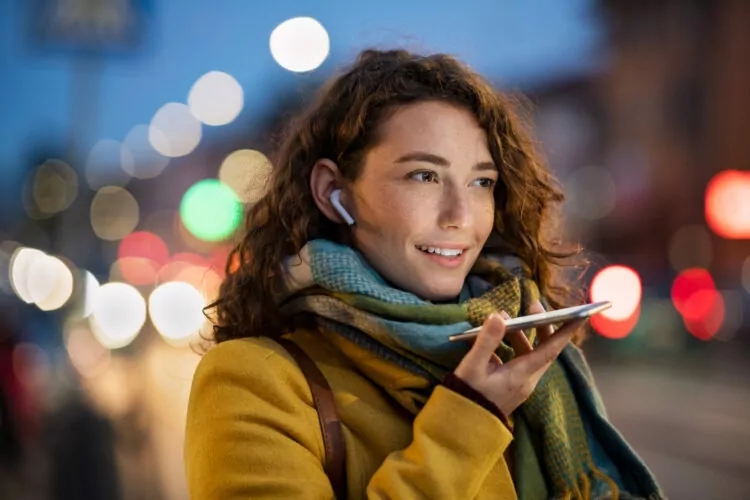Here’s how Snapchat’s friend suggestions work:
Snapchat comes up with friend suggestions by using information that you provide to the app.
This includes your contacts, existing friends, and user data that is generated every time you engage with the app.
All of that is put through sophisticated analytical software, and the end result is the list of suggested friends.
So if you want to learn all about how Snapchat determines friend suggestions, then you’re in the right place.
Keep reading!
- Accidental Snapchat Screenshot: Good Reasons?
- SnapChat Quick Add Friend Suggestions: Why No Mutual Friends?
- Deleting Snapchat: Should You?
- Snap Score Going Up: Not Replying?
- Snapchat Takes Up So Much Phone Storage: Why?
- Snapchat Says Add Friend After Deleted: Why?
- Snap Score Goes Up Randomly: How?
- Fake Snapchat Account: Who Is Behind?
- Bots on Snapchat: Why So Many?
- Fake Snapchat Accounts: What Is the Point?

How Does Snapchat Determine Who to Suggest for Friends? (6 Factors)

Before getting into the nuts and bolts of it all, it’s important to understand why Snapchat suggests friends at all and why the app is incentivized to suggest friends you are likely to add.
The goal of Snapchat is to get you to spend time on the app.
That’s how the entire model works, so the Snapchat team is working hard to give you plenty of friends to engage with and things to do with their app.
With that in mind, it’s easy to see why so many different factors are pooled together to create friend suggestions.
#1 Snapchat Looks Through Your Contacts

When you first log into Snapchat, it prompts you for permission to peruse through your contacts.
Most people use Snapchat on a phone or other mobile device, so you typically have a lot of contacts stored there.
With Snapchat, you have an option to send a friend request to anyone or everyone on your contacts list.
The app automates this, so it’s an easy way to build up a list of friends at the beginning.
But you might add contacts to the phone later.
Or, you might not send an immediate request to everyone on the phone.
Regardless of those decisions, Snapchat has permission to see all of your contacts.
So, if you don’t keep up with sending requests, the app can simply suggest people who show up in your contacts.
It’s pretty simple, and it’s definitely one way that Snapchat goes about this whole process.
On another note, learn all about how far Snapchat notifies your contacts when you join Snapchat here.
#2 Listing Friends of Friends

But contacts will only go so far.
Sure, the app can recommend everyone you definitely already know, but if it really wants to drive engagement, then it’s going to try to connect you with people you will want to talk to on a regular basis.
That means reconnecting you with old friends and introducing you to people you might already vaguely know.
To do this, the app leans heavily on the concept of friends of friends.
It’s pretty easy to understand at the surface level.
If you and another user have a friend in common, there’s a chance that you already know each other.
If you have a lot of friends in common, then there’s a high probability that you know each other.
So, Snapchat friend suggestions will prioritize the users who have the most friends in common with you already.
Most of the time, this is a successful strategy, but it won’t always land.
That’s why the friends of friends idea is used in tandem with powerful algorithms and other friend-finding techniques.
If the rest of the algorithm thinks that you and a person would engage a lot on the app, then it will cross-reference your common friends.
If you have such common friends, you can bet the app will suggest that you add each other.
#3 Taking Cues from Group Chats

The first level of this idea is also pretty simple.
If you’re in a group chat with someone who isn’t on your friends list, then there’s a strong chance that you know this person.
Snapchat wants to recommend friends who you like, so why not start with people who are already talking to you?
The app will often recommend people who are in your group chats, but this idea doesn’t stop at such a shallow level.
The idea of common group chats can follow an algorithm similar to that of friends of friends.
Once the app has exhausted recommendations from your group chats, it can look at people who are in group chats with multiple of your friends (or fellow group chatters).
This creates an entire network of potential friends who might engage with you regularly.
It’s then combined with a similar algorithmic approach that compares other factors to see if such a recommendation will land.
So, to simplify what’s happening here, you might get suggested a friend who was never in a group chat with you.
Instead, they are in a group chat with someone who is in a group chat with you.
There’s a degree of separation.
Conversely, they might be in a group chat with one of your friends.
This line of thinking exists at multiple layers with any number of “friendship” indicators.
Friends of friends and group chats are highlighting a way of thinking about making friend recommendations.
#4 Comparing Common Interests

We’ve made it through the easy stuff.
This is where everything starts to get a lot more convoluted.
And, if you find AI creepy when it seems to read your mind, then this is where things get a lot creepier.
Snapchat pays attention to what you do on the site.
The goal of Snapchat (like any social media app) is to drive engagement.
If you interact with their stuff then they have more opportunities to make money off of the time you spend on the app.
That’s what it all really boils down to.
So, if you favor certain types of content, Snapchat is going to notice.
Let’s say you’re really into ice dancing.
That interest drives you to watch a bunch of Snapchat videos that are about or include ice dancing, so the app notices.
It’s going to use that information when it recommends friends.
It might recommend someone else who is into ice dancing.
If possible, there will be other metrics that push that person to be a likely friend.
These are things like location data (people in the same city are more likely to know each other), friends of friends, and all of the rest.
If you and your fellow ice-dancing aficionado can connect and share your passion, then you’re going to use the app more.
Naturally, Snapchat is taking a sophisticated look at your interests.
They’re not just cataloging how much time you spend watching ice-dancing videos.
They’re paying attention to all of your content consumption to try to map out an idea of what you’re into and what kinds of people you will engage with the most.
They do the same for all users, and then they steer users towards each other based on this information.
But, Snapchat isn’t always great for meeting complete strangers on the internet.
This data isn’t typically used to suggest true strangers.
Instead, it informs which potential friends are pushed the hardest.
#5 Seeing How You Engage With the Platform

Engaging with the platform follows a concept similar to that of tracking interests, but the core piece of information isn’t quite the same.
Instead of tagging the content that holds your attention, this is looking more at what kinds of things you do most with the app.
Are you watching promoted videos all day?
Are you only watching the stories of friends?
Do you engage in text conversations more than exchanging videos?
There are a lot of ways to use Snapchat, and how you use it is of great interest to the people running the app.
This information won’t inform friend suggestions as much as the things listed above, but it still goes into the calculations.
If you’re someone who uses Snapchat for regular conversations with friends, then it’s going to lean towards recommending new friends who have similar tendencies.
Once again, this is all about engagement, so the app wants to suggest friends who will use the app with you in ways that you find interesting and/or compelling.
If you think about how this data can be paired with common interests and expanded networks of people who know people who know you, it’s not entirely surprising that the friend suggestions can be eerily well-informed.
#6 Very Big Data

Snapchat is a major tech company.
As such, it collects and analyzes ridiculous volumes of data related to its users.
To skip a very complicated conversation about privacy and all of that, it’s enough to say that if you use Snapchat, they’re paying attention to what you do with the app.
That much is necessary for the stuff above, but it goes well beyond usage statistics and preferred content.
Snapchat can pay attention to your location information.
It can see your contacts.
It can interact with your browsing history.
It’s hard to be sure just how much information the app can glean from your phone.
When such huge amounts of data are put through intense data analysis, the people running the app can figure out a lot of stuff.
That’s how targeted advertising works, as an example.
Big data is used to figure out what kinds of ads will have the best effect, and those ads are sent to the people most likely to respond to them.
Snapchat takes a similar philosophy with suggesting friends.
The app is already using networking systems to figure out which people are most likely to already know you.
That information is parsed with data on your interests and how you like to use the app.
You can add in location data, occupational information, and other personal information that you have revealed to the app.
Put it all through the powerful number-crunching software, and you have a system that is using every resource available to it to accomplish what might otherwise seem like a simple task.
How Much Data Does Snapchat Use?

Okay. This is how Snapchat suggests friends.
All is well and good.
How much data does Snapchat use, though?
Is it possible that Snapchat is causing your high cellular data usage?
You will consume about 160 MB if you send snaps continuously for an hour.
Each snap takes up about 1 MB of traffic.
Comparatively, sending a text message takes about 20 KB (1 MB is 1000 KB), but sending about 10 stories takes about 20-25 MB.
Learn all about Snapchat’s data usage here.
- Accidental Snapchat Screenshot: Good Reasons?
- SnapChat Quick Add Friend Suggestions: Why No Mutual Friends?
- Deleting Snapchat: Should You?
- Snap Score Going Up: Not Replying?
- Snapchat Takes Up So Much Phone Storage: Why?
- Snapchat Says Add Friend After Deleted: Why?
- Snap Score Goes Up Randomly: How?
- Fake Snapchat Account: Who Is Behind?
- Bots on Snapchat: Why So Many?
- Fake Snapchat Accounts: What Is the Point?

